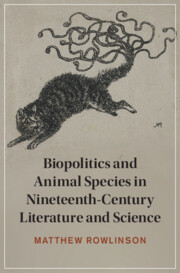Book contents
- Biopolitics and Animal Species in Nineteenth-Century Literature and Science
- Cambridge Studies in Nineteenth-Century literature and culture
- Biopolitics and Animal Species in Nineteenth-Century Literature and Science
- Copyright page
- Dedication
- Epigraph
- Contents
- Figures
- Preface and Acknowledgements
- Note on Citations
- Introduction Method and Field
- Part I Species, Lyric, and Onomatopoeia
- Part II How Did Darwin Invent the Symptom?
- Part III Societies of Blood
- Notes
- Works Cited
- Index
- Cambridge Studies in Nineteenth-Century Literature and Culture
- References
Works Cited
Published online by Cambridge University Press: 11 January 2024
- Biopolitics and Animal Species in Nineteenth-Century Literature and Science
- Cambridge Studies in Nineteenth-Century literature and culture
- Biopolitics and Animal Species in Nineteenth-Century Literature and Science
- Copyright page
- Dedication
- Epigraph
- Contents
- Figures
- Preface and Acknowledgements
- Note on Citations
- Introduction Method and Field
- Part I Species, Lyric, and Onomatopoeia
- Part II How Did Darwin Invent the Symptom?
- Part III Societies of Blood
- Notes
- Works Cited
- Index
- Cambridge Studies in Nineteenth-Century Literature and Culture
- References
Summary

- Type
- Chapter
- Information
- Publisher: Cambridge University PressPrint publication year: 2024

